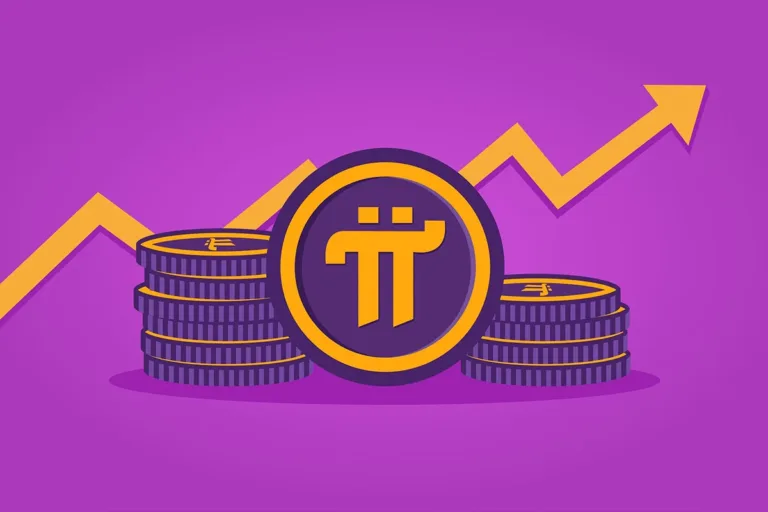Dogecoin 2050: From Internet Joke to Future Asset?
When Dogecoin was first launched in December 2013 by two software engineers—Billy Markus and Jackson Palmer—no one could have predicted that this digital coin featuring a Shiba Inu would one day become one of the biggest stars in the crypto universe.
What began as a satirical take on the overly serious world of finance has now become part of a much larger conversation about the future of the digital economy.
From a lighthearted meme on Reddit to a payment tool used by millions, Dogecoin’s journey has been nothing short of unbelievable.
It’s not just a funny coin anymore; Dogecoin has captured global attention—even celebrities like Elon Musk have dubbed it the “people’s crypto.”
Principal Conclusion
Hide-
Wide Forecast Range: Price projections for 2050 range from $0.02 to $40 per DOGE, depending on the prediction model used.
-
Fundamental Drivers: Network adoption, community support, and crypto regulations will heavily influence price movements.
-
Popular Forecast Methods: Long-term technical analysis, historical regression models, and Monte Carlo simulations are often used.
-
Major Risks: High volatility, altcoin competition, and regulatory uncertainty remain significant concerns.
-
Investor Strategy: Portfolio diversification and staying updated with crypto news are essential for long-term DOGE investors.
Now, as the use of digital currencies continues to expand across the globe, one pressing question echoes among investors, analysts, and DOGE fans alike:
“How much will Dogecoin be worth in 2050?”
The Evolution of Dogecoin: From Meme to Market Value
A Meme Coin That’s Not Just a Joke
Dogecoin wasn’t born in a financial lab or from an ambitious tech project. It started as a tongue-in-cheek response to the seriousness of Bitcoin and the crypto space, which had become flooded with technical jargon, market panic, and regulatory fear.
Markus and Palmer created Dogecoin as a playful rebellion: “Why can’t crypto be fun?”
What happened next exceeded all expectations. The joke turned into a movement. The internet community fell in love with Dogecoin—not just for its iconic Shiba Inu mascot, but for the lighthearted, inclusive philosophy it carried.
DOGE users on Reddit, Twitter, and other forums began raising funds for social causes: from supporting Olympic athletes to building clean water wells in Kenya.
This is where Dogecoin found its soul—not as a tech product, but as a grassroots community project. And most importantly: this spirit wasn’t bought—it grew organically.
Fundamental Factors Driving Dogecoin’s Value
To understand where Dogecoin could be headed, we need to look at what supports its value today.
DOGE’s price doesn’t exist in a vacuum—it’s shaped by a wide array of forces. Here are the main factors that could either fuel or hinder its growth:
Network Adoption
The more widely DOGE is accepted by merchants, payment platforms, and financial institutions, the more valuable it becomes as a functional currency.
Real-world adoption signals trust in DOGE not just as a speculative asset, but as a legitimate medium of exchange.
Liquidity and Listings
Dogecoin’s presence on major exchanges like Binance, Coinbase, and Robinhood is a massive advantage. It makes DOGE easily accessible to both retail and institutional investors, while boosting trading volume—crucial for price stability.
Social Sentiment
Dogecoin is a social media phenomenon. Unlike other cryptos backed by whitepapers and dev teams, DOGE thrives on memes and tweets.
A single tweet from Elon Musk can send its price soaring or plummeting in minutes. That’s both its superpower—and its Achilles’ heel.
Regulation
The crypto world is under intense scrutiny. If DOGE is one day classified as a security by regulators like the SEC, it could face tighter restrictions and limited circulation.
On the flip side, clear and supportive regulation could pave the way for major institutional adoption. It all depends on policy direction.
Altcoin Competition
Crypto evolves fast. Projects like Ethereum, Solana, and Avalanche are pushing out cutting-edge technology.
If Dogecoin fails to upgrade or introduce new features, it risks becoming irrelevant in a world where innovation is everything.
Gazing Ahead: How Analysts Predict DOGE’s 2050 Price
Forecasting Dogecoin’s price in 2050 is no easy task. The world is changing fast, and crypto is one of the most volatile and rapidly evolving industries.
Still, analysts use a range of models to make educated guesses about what lies ahead. Here are some of the most common forecasting approaches:
1. Technical Analysis
This method relies on historical data: price charts, candlestick patterns, moving averages, and indicators like MACD to identify future trends.
For example, WalletInvestor projects DOGE to be worth around $0.57 by 2030, assuming past patterns continue.
2. Historical Regression Models
These models use historical compound annual growth rates (CAGR) to extrapolate future prices, assuming steady growth over time.
Coinpedia forecasts DOGE to reach an average of $2.75 by 2030, and potentially rise further if growth holds through 2050.
3. Monte Carlo Simulation
This probabilistic approach runs thousands of simulations based on market variables like volatility, trading volume, and sentiment to project a wide range of future prices.
Axi’s simulations show highly variable outcomes—from extremely low values to outlier highs—underscoring just how unpredictable DOGE really is.
DOGE 2050: Price Projection Summary
Here’s a breakdown of estimates from several notable sources:
| Source | Methodology | 2050 Price Projection (USD) |
|---|---|---|
| CoinCodex | Technical analysis | $0.05 – $0.20 |
| Axi | Multi-source aggregation | Not available |
| DigitalCoinPrice | 2028 statistical estimate | $1.03 (up to 2028 only) |
| PricePrediction.us | Regression + Monte Carlo | $0.02 – $0.10 |
| TokenTrendTracker | Sentiment analysis | $0 (if DOGE fails to adapt) |
| BitScreener | Growth-based statistics | Up to $40 (!?) |
Why Such a Wide Range?
Because each model rests on different assumptions. Some put their faith in community strength, others in DOGE’s tech limitations, and some base predictions on external forces like regulation and macro adoption.
Key Risks That Could Derail Dogecoin
1. Wild Volatility
DOGE is not for the faint of heart. Price swings of 20–30% in a single day aren’t uncommon. This can create massive profit potential—or devastating losses.
2. Regulatory Risk
If regulators decide DOGE is a security, it would face stricter rules and trading limitations. That could shrink its reach and reduce market interest.
3. Whale Ownership Concentration
A large portion of DOGE is held by a few major wallets. If these “whales” sell off in bulk, the price could crash instantly. Uneven asset distribution is a ticking time bomb.
4. Lack of Innovation
While other cryptos roll out updates—staking, DeFi features, Layer 2 scaling—Dogecoin has mostly stood still. Without serious upgrades, DOGE risks becoming obsolete.
Long-Term Investment Strategies for DOGE
If you’re bold enough to include DOGE in your long-term portfolio, here are some smart strategies to consider:
1. Diversify Your Portfolio
Never put all your eggs in one basket. Combine DOGE with assets like Bitcoin, stablecoins, or even traditional instruments like bonds for balance.
2. Use Dollar-Cost Averaging (DCA)
Buy DOGE in small, regular amounts at fixed intervals—regardless of price. This helps reduce the impact of short-term volatility.
3. Stay Informed
Always track developments around Dogecoin, policy updates, and statements from crypto influencers. In crypto, information is your edge.
4. Set Stop-Losses
Don’t let emotions drive your decisions. Determine your maximum acceptable loss beforehand, and stick to it.
Conclusion: Dogecoin 2050—Bold Bet or Blind Gamble?
Dogecoin is an anomaly in the world of finance. It wasn’t born from a tech revolution, doesn’t have the robust fundamentals of Ethereum, and lacks a detailed roadmap. But maybe that’s exactly why it works.
Price predictions for DOGE in 2050—ranging from $0.02 to $40—highlight just how uncertain the future of crypto really is.
Over the next 25 years, anything could happen. Dogecoin could become a recognized global currency—or fade away into the digital void.
But one thing remains true: DOGE has taught us that sometimes, the biggest movements come from the most unexpected places.
For some, DOGE is a joke. For others, it’s a once-in-a-lifetime opportunity.
It’s up to you to decide—will Dogecoin become a digital legacy for future generations, or just a meme lost in the blockchain?
Frequently Asked Questions (FAQs)
Can Dogecoin’s 2050 price predictions be trusted?
Price predictions are speculative and depend on numerous assumptions. They should be viewed as possible scenarios, not certainties.
Why do price forecasts vary so widely?
Differences in methodology (technical, statistical, probabilistic) and assumptions (adoption, regulation) create broad price ranges.
What are the biggest factors influencing DOGE’s price?
Social media sentiment, institutional adoption, and regulatory policy are key drivers that can move the price significantly.
Could Dogecoin reach $1 before 2050?
Some analysts are optimistic, but others believe a major catalyst—like DeFi integration—is needed for DOGE to break $1.
What’s the best way to invest in Dogecoin long term?
Diversify your holdings, apply dollar-cost averaging, and stay informed on regulatory and market developments.







